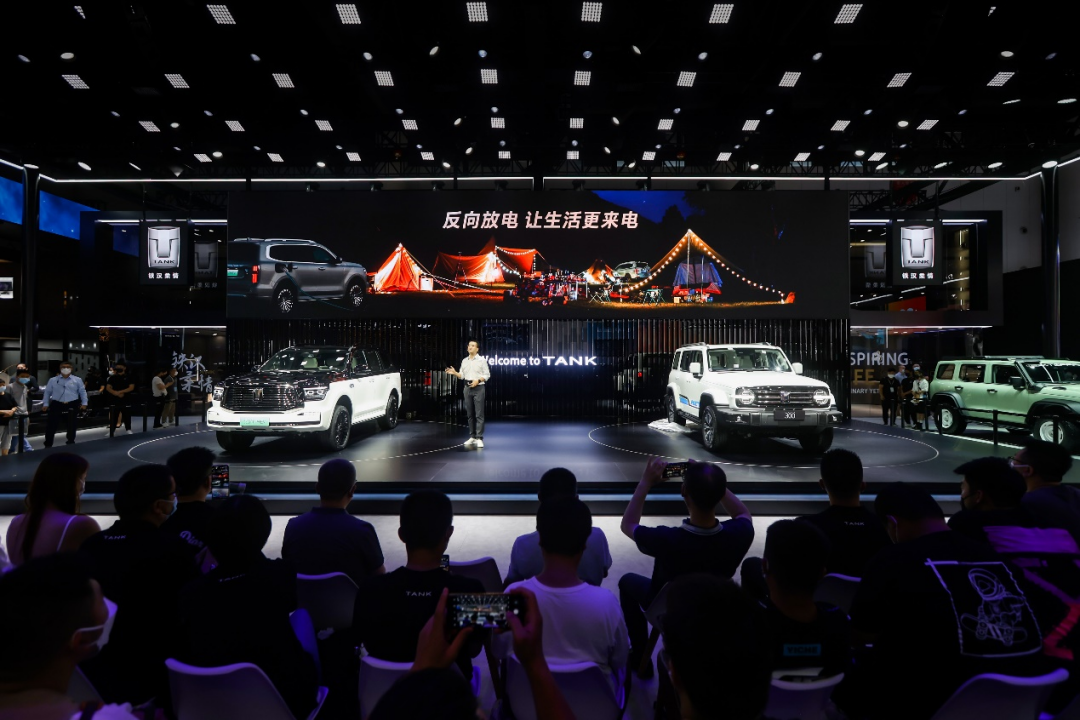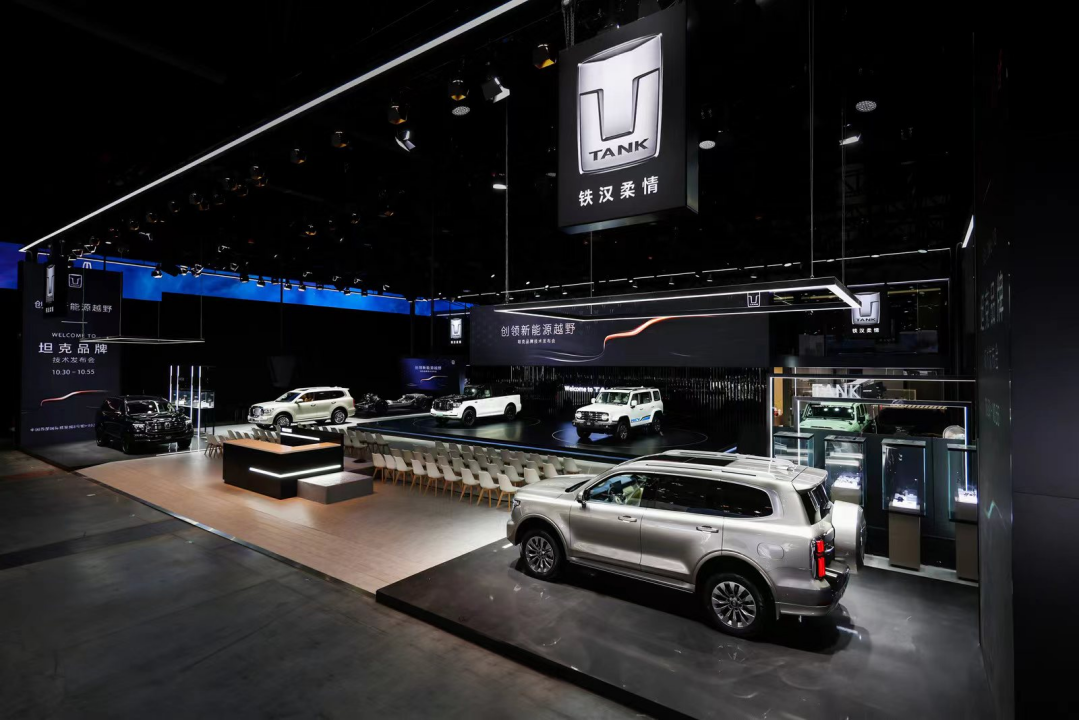On August 26th, Tank brand officially released the “Off-road + New Energy” technology route and the Off-road Super Hybrid architecture at the 25th Chengdu International Auto Show. At the same time, two mass-produced hybrid models, Tank 300 HEV and Tank 500 PHEV, made an appearance.
Tank brand CEO Liu Yanzhao said, “We are in an era of tremendous industry change, and new energy off-road has become an unstoppable trend. The electrification of off-road vehicles should be based on the premise of off-road while the application of electricity should be an auxiliary, not the other way around. The Off-road Super Hybrid architecture not only brings a leap in off-road experience but also a qualitative change from a car to a way of life. This is a higher-level innovation of Tank brand.”
Tank brand’s first off-road hybrid architecture integrates engine and motor in parallel double-direct drive, equipped with TOD + differential lock mechanical four-wheel drive system, SOC energy management, and aims to be compatible with outdoor off-road and urban travel, achieving full coverage of light, medium, and heavy off-road.
Based on the Off-road Super Hybrid architecture, Tank introduced two mass-produced hybrid models – Tank 300 HEV and Tank 500 PHEV.
The Tank 300 HEV version is equipped with a 2.0T Miller cycle engine and a 9HAT transmission, with a maximum power of 224 kW and a maximum torque of 640 Nm. When driving in the city, the motor is directly involved, enabling faster start and acceleration, and the acceleration to 100km/h is within 9 seconds. During off-road driving, the motor can also provide extra power to help get out of trouble and provide longer endurance. At the same time, the motor’s assistance can also reduce fuel consumption during congestion. The comprehensive fuel consumption is controlled within 10 L/100 km under WLTC conditions, and within 9 L/100 km under city conditions.
The Tank 500 PHEV plug-in hybrid version continues the 3.0T V6 engine of the fuel version, and is equipped with an additional 19.94 kWh battery. It achieves a maximum comprehensive power of 300 kW and a maximum comprehensive torque of 750 Nm, with an acceleration time from 0-100 km/h of only 6.6 seconds, combined with a 2.0T+9HAT powertrain.
With a full battery, the comprehensive fuel consumption is 4.4 L/100 km under WLTC conditions, and the comprehensive endurance is 736 km. The battery system supports 0.5-hour fast charging and 3-hour slow charging, and has a 3.3 kW external discharge power, providing possibilities for outdoor luxury camping and emergency power supply.
By the end of this year, the Tank 300 HEV and Tank 500 PHEV plug-in hybrid models will be available for pre-order worldwide. In the future, the 3.0T V6 PHEV product will be equipped on high-end models such as Tank 700 and Tank 800, and will be gradually launched on the market.
This article is a translation by ChatGPT of a Chinese report from 42HOW. If you have any questions about it, please email bd@42how.com.
